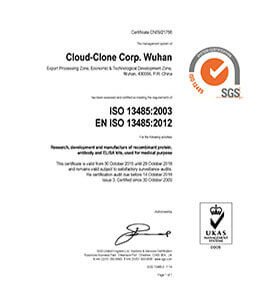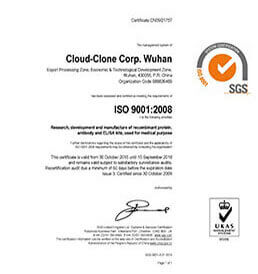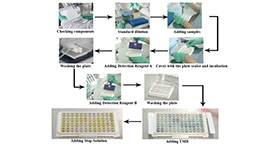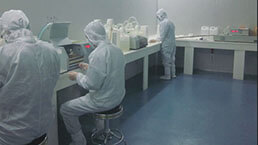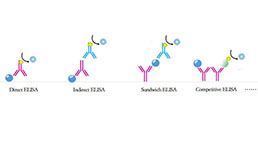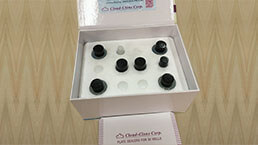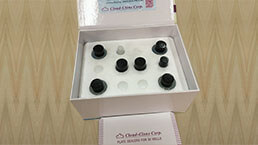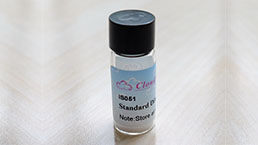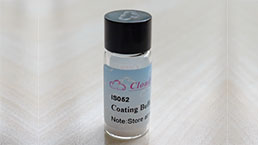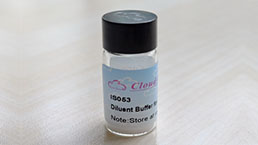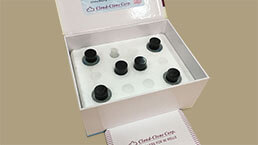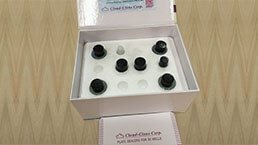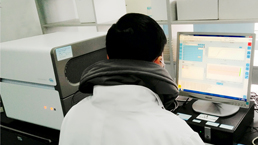ELISA Kit DIY Materials for Fibroblast Growth Factor 15 (FGF15)
- Product No.KSL154Ra01
- Organism SpeciesRattus norvegicus (Rat) Same name, Different species.
- Reagent Contents Capture Antibody, Detection Antibody, Standard, Streptavidin-HRP, TMB Substrate, 96-well Plate
- Detectable SampleSerum, plasma, tissue homogenates, cell lysates, cell culture supernates and other biological fluid.
- Applicable PrincipleDouble-antibody Sandwich ELISA for Antigen Detection
- Detectable Range0.156-10ng/mL
- Applicable Sensitivity0.070ng/mL
- ApplicationsMain materials for "Do It(ELISA Kit) Yourself"
- Downloadn/a
- UOM 96T*596T*10 96T*20 96T*50 96T*100
- FOB
US$ 1393
US$ 2322
US$ 4180
US$ 8127
US$ 13932
For more details, please contact local distributors!
SPECIFITY
The Abs in the kit have high sensitivity and excellent specificity for detection of Fibroblast Growth Factor 15 (FGF15). No significant cross-reactivity or interference between Fibroblast Growth Factor 15 (FGF15) and analogues was observed.
USAGE
1. Coat the plates with 100μL per well of working solution of Capture Antibody.incubate overnight at 4°C or incubate at 37°C for 2 hours.
2. Aspirate and wash 1 time.
3. Block the plates with 200 μL per well of working solution of Blocking Buffer. Incubate at 37°C for 1.5 hours.
4. Aspirate and wash 1 time. The plates are now ready for sample detection, the protocol is the same as regular ELISA.
STORAGE
Antibodies, Standard and Streptavidin-HRP should be stored at -20°C. TMB should be stored at 4°C. 96-well Plate could be stored at room temperature. The contents are valid for twelve months. They are stable for one month after opening when stored at 4°C.
Support Pack
GIVEAWAYS
INCREMENT SERVICES
| Magazine | Citations |
| Endocrinology. | Naringenin Prevents Obesity, Hepatic Steatosis, and Glucose Intolerance in Male Mice Independent of Fibroblast Growth Factor 21 PubMed: 25774553 |
| Inflammatory Bowel Diseases | Alterations in Enterohepatic Fgf15 Signaling and Changes in Bile Acid Composition Depend on Localization of Murine Intestinal Inflammation pubmed:27580383 |
| J Lipid Res. | Commensal bacteria at the crossroad between cholesterol homeostasis and chronic inflammation in atherosclerosis. pubmed:28130274 |
| BMC Endocrine Disorders | The relationship between bile acid concentration, glucagon-like-peptide 1, fibroblast growth factor 15 and bile acid receptors in rats during progression of glucose intolerance 10.1186/s12902-017-0211-5 |
| Journal of Physiology and Biochemistry | The ileal FGF15/19 to hepatic FGFR4 axis regulates liver regeneration after partial hepatectomy in mice Pubmed:29468415 |
| Developmental Cell | FGF15 Activates Hippo Signaling to Suppress Bile Acid Metabolism and Liver Tumorigenesis Pubmed: 30745141 |
| Endocrinology | Interactions between the gravitostat and the fibroblast growth factor system for the regulation of body weight |
| Food & Function | Lactoferrin promotes bile acid metabolism and reduces hepatic cholesterol deposition by inhibiting the farnesoid X receptor (FXR)-mediated enterohepatic axis Pubmed: 31626262 |
| Journal of Translational Medicine | Gut microbiota from coronary artery disease patients contributes to vascular dysfunction in mice by regulating bile acid metabolism and immune activation Pubmed: 33036625 |
| Chin Med | Si-Wu-Tang ameliorates fibrotic liver injury via modulating intestinal microbiota and bile acid homeostasis 34736501 |
| Int J Biol Sci | Dynamics of the gut-liver axis in rats with varying fibrosis severity Pubmed:35637968 |



